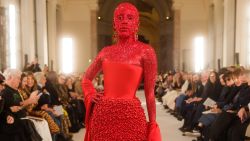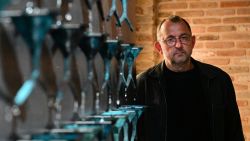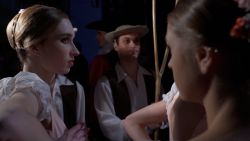Editor’s Note: In October 2015, Balmain creative director Olivier Rousteing joined CNN Style as guest editor. He commissioned a series of features on the theme of #diversity, exploring issues around fashion, politics, gender, family, race and culture.
I was adopted from an orphanage when I was around a year old. It was 1985 in France, I was a young black child, they were a white couple — they were pushing boundaries when they chose me. I think that’s a beautiful act of love.
I don’t know my biological parents and I don’t know why they abandoned me but, I think it’s what makes me strong today. When you lose the love of your biological mother, in a way, you feel like you’re not scared of anything. You have to just push through, believe in you, and not be afraid.
As part of my guest editorship, I want to talk about different backgrounds, diversity and childhood. Topics that are very important to me and the world that we inhabit today.
My adoptive parents loved me and made me believe in myself, but I realized at around 11 years old that I was different when I was being bullied at school — kids would say things like “you’re a bastard, your mom is a prostitute, your dad is not your dad.”
Fashion helped me; it was like therapy. With fashion, I could identify myself to something. When you get dressed, you try to play a character — and I played this character so much when I was a kid.
When friends after school would ask me why I looked different to my parents, I would say “Oh, I’m a Prince from Egypt or Morocco or Brazil.”
Youth, race and tradition
When the press announced that I was the new creative director for Balmain the thing that was most shocking for a lot of people was not my age (I was 26 at the time) but my color, and that really surprised me. Suddenly there was all these stories about me being the first black designer in a luxury, heritage fashion house.
Sometimes the fashion crowd think they’re really modern and avant-garde, but I think the system can also be quite old fashioned. I’m proud today to speak about a world where you walk down the street and see so much diversity, different people, different colors, different races.
It’s what I want to try to express in my catwalk, in my casting. All my girls, no matter their age, they can be mothers, they can be 20 years old, they can have different body shapes and be different colors. Asian, American, African, European — they’re are beautiful, strong women who are proud to be on the runway.
A modern muse
I think that’s why I choose muses that are actually really different and modern — I chose them because they are contemporary, they are part of this new world.
They are part of the present and the future. For example, Kim Kardashian. She’s my friend, she’s a woman that I love for different reasons. First, I think she’s powerful, she’s representing the new world and she represents the new family: Kim, Kanye, North. I think that’s a modern family. When I was a child, I didn’t have this example when I was growing up.
I also think she’s pushing boundaries when it comes to the female form. I love dressing her, she’s a different body type to the models on my catwalk. I love to see different body shapes, different girls, different personalities and different backgrounds – she’s part of my world.
#Diversity
I decided to be a designer because I love clothes, fashion and the glamour of the fashion world. But I realized I didn’t want to just please the front row and the industry.
I have the chance to express way more than that: my vision of the world and diversity. It’s always been part of my life, part of my blood and mind, but it’s a topic that you can really express when you’ve grown up and you know who you are.
I want to reach people that dream big and that’s why, for me, diversity is such an important topic. It’s something that is part of me and something that I will always fight for.





















